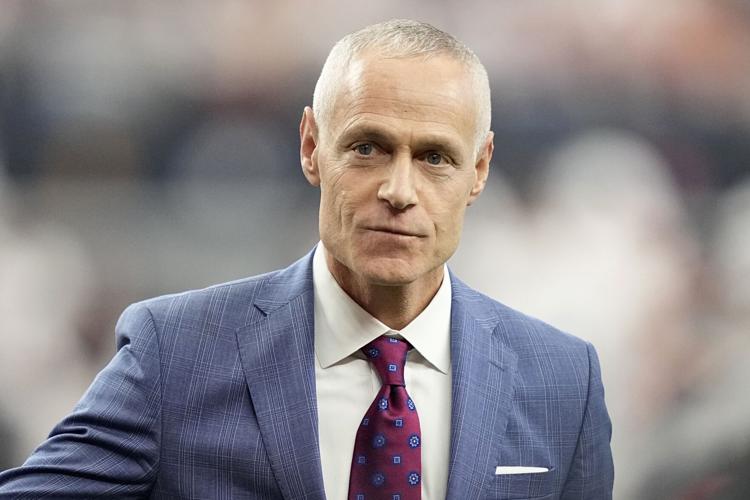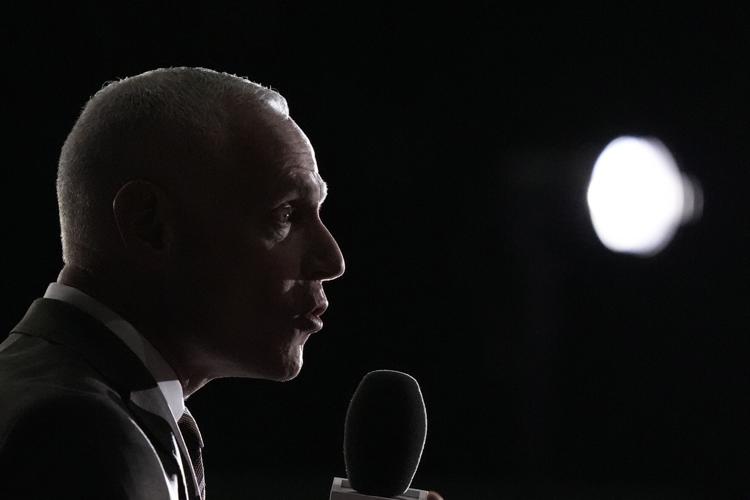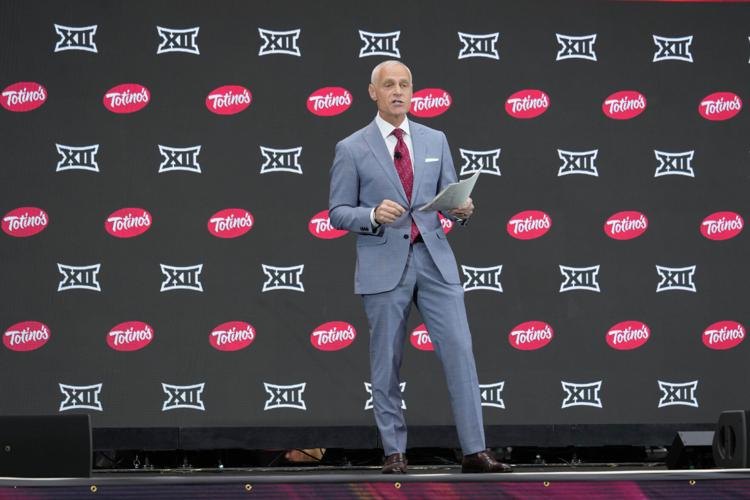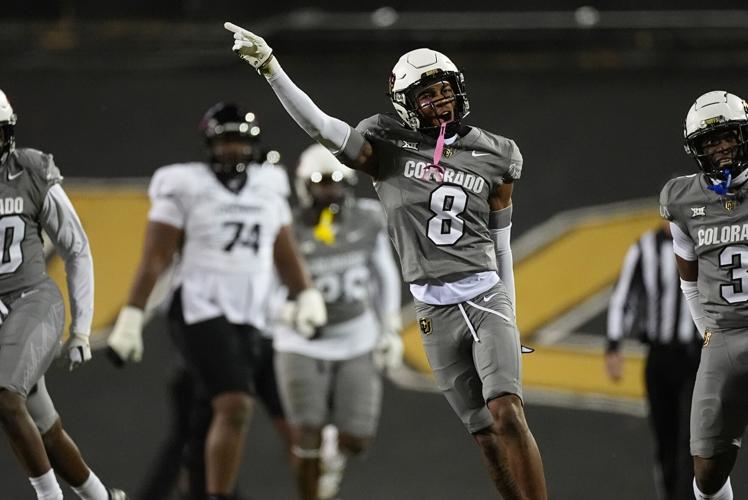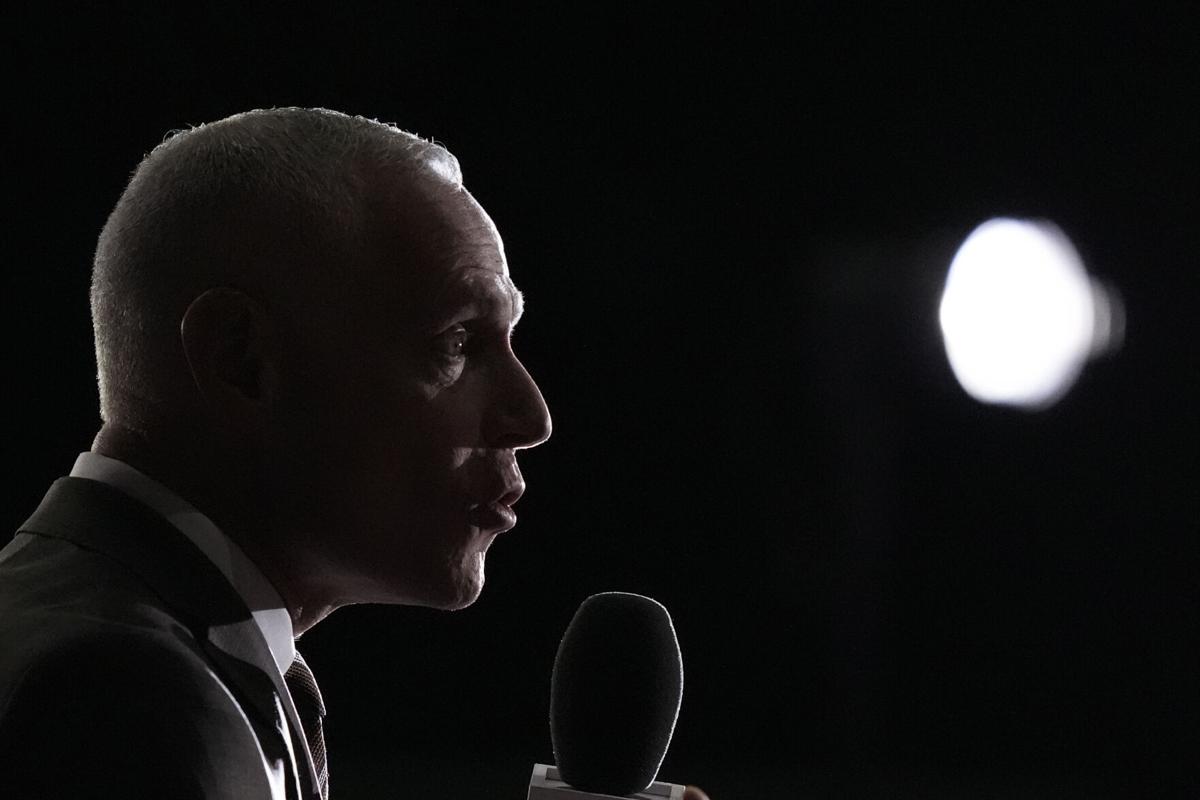Brett Yormark believes no program should be left behind. So the Big 12 commissioner is making it his mission to visit all 16 of the conference’s campuses during the football season, even if it means double-dipping on some weekends.
The “Four Corners” schools — Arizona, ASU, Colorado and Utah — are of the highest priority. They’re the newest members of the league. Yormark visited Tucson on Saturday, Oct. 26, for the UA-West Virginia game. He’s already been to Tempe and Salt Lake City. He’ll head to Boulder for the Buffaloes’ regular-season finale vs. Oklahoma State on the day after Thanksgiving.
“I’m on pace to see every school at least once,” Yormark said about an hour before kickoff between the Wildcats and Mountaineers. “I wanted to get to the Four Corners schools to embrace their fan base, get a sense for how they do things on game day. So far, so good.”
Yormark’s next stop on Saturday, Nov. 2, is Waco, Texas, for the Baylor and TCU game. But first he sat down with the Star at Arizona Stadium to talk all things Big 12 football, from kickoff times to availability reports to the conference’s place in the ever-changing landscape of collegiate athletics. The conversation has been lightly edited.

Big 12 commissioner Brett Yormark, shown during the first half of the Big 12 Championship Game on Dec. 2, 2023, in Arlington, Texas, is making a concerted effort to visit all 16 of the conference’s campuses this fall.
The Big 12 has embraced Friday nights. How do you balance taking advantage of those TV windows — late Friday, late Saturday — with the fan experience? An 8:15 p.m. start can be challenging if you’re going to the game.
A: “It’s a real balance. We’ve got to be creative. We’ve got to explore new and different windows. I went out and met with FOX, I met with ESPN, already thinking about scheduling for next year. How do we create some open air, if you will, for the Big 12?”
What does “open air” mean?
A: “Open air means just where there’s less clutter, less volume. On a Friday night, that provides us with an opportunity. It might not be the only place for us to go, but ... we’ve done pretty good on Friday night when you look at the numbers. ... So we’re going to explore what those opportunities look like moving forward.
“But there’s a balance with the fans. I met with some of the fans in Manhattan, Kansas, when I was there that night (Sept. 13 vs. Arizona). They liked that Friday night because it was an atypical moment for them when you look at the historical calendar; they’re willing to do it once a year.
“We just have to be sensitive. So we’ll see. But we are looking at scheduling for next year and where some of those opportunities exist.”
Adding the Four Corners schools, plus BYU, gives you an additional time zone or two, depending on the time of year.
A: “It’s been really good for us. We’ve done really well in that late window, because, again, there’s less going on at that time.
“I like where we’re situated right now when you think of the windows. But I would like to explore new and different opportunities, keeping the fans in mind and keeping the travel also in mind for our student-athletes.”
As we sit here today, there are three Top 25 teams from the Big 12 and there could be a fourth by the end of the weekend. (Colorado became that fourth team Sunday.) Multiple teams are bowl-eligible. What are your overall thoughts on the performance of the conference in football?

Colorado cornerback DJ McKinney reacts after making a stop against Cincinnati in the first half of their game Saturday, Oct. 26, in Boulder, Colo. The Buffaloes won and entered the AP Top 25 the following day.
A: “I’m excited about it. When I was in Vegas in July during (Big 12 Football) Media Days, we were pretty profound in saying we’re the deepest conference, there’s a lot of parity, every game is going to matter and that November could be potentially a magical month when you think about all the different scenarios that could unfold as you lead up to that first Saturday in December. We’re on pace for that right now. Some of the schools might look a little different than what we anticipated, those at the top, but that’s OK. That happens in a season.”
You mentioned parity. That makes for exciting matchups and surprising outcomes. But those teams can pick one another off. Whereas, say, the Big Ten in recent years has had a handful of powerhouses that always contend for the College Football Playoff and prop up the rest of the league. Which do you prefer?
A: “Well, I love the parity right now. But I think over time — and when I say time, the foreseeable future, in the next couple of seasons — you’re going to want schools to ascend to the top so that they’re part of that national conversation even before the season. We might not be there just yet, but I think we’re well on our way.

Big 12 Commissioner Brett Yormark speaks during Big 12 Football Media Days in Las Vegas on July 9.
“It starts with a competitive balance. And then ultimately there are going to be those outliers, those two or three schools like you find in some of the other conferences. I think we’ll get there.”
It feels as if the Big Ten and SEC are teaming up at the expense of everyone else. Is that just a perception? Is it something that concerns you?
A: “I think it’s more of a perception than a reality. Football is bigger than any one conference. The game is bigger than any one conference.
“Speaking on behalf of the Big 12, we have a big voice in what happens in the future, and I make sure that our voice is heard and that I represent our membership in all the right ways. There is a spirit of cooperation amongst the four of us. We do meet quite a bit in person and virtually, just to make sure that we’re vetting what’s going on and where we need to go.
“Rest assured, and I’ve told our members this and our fans: We have a big voice, and we’re going to make sure our voice is heard as it relates to any changes moving forward.”
Those two leagues have availability reports — aka, injury reports. They’re quite popular among fans and media. Where do you stand on that?
A: “I’ve been discussing that quite a bit of late. It’s certainly something that we’re going to consider for next year.”
What is the value of it in your view?
A: “Transparency. I think transparency is critically important. So we’re exploring it. We see what the others are doing, and it’s a topic of conversation for sure.
“It’s got to be done the right way. It’s got to have the right model and approach. But I think it’s very valuable. And I feel that we’re getting closer to moving in that direction.”
It’s something else that you could get a sponsor for. Speaking of which, any progress on the naming rights for the league itself?

Big 12 Commissioner Brett Yormark addresses the media during the NCAA college Big 12 women's basketball media day, Tuesday, Oct. 22, 2024, in Kansas City, Mo.
A: “I can’t speak to anything specific, but I can tell you that I’m exploring all the right ways to create value for our membership, because I think it’s critically important right now to do that. I’m leading that effort.”
Expansion and realignment remain hot topics. The Big 12 took a hard look at UConn earlier this year. Where do things stand on that front?
A: “We’re at 16 teams now, and I love the makeup and composition of the conference. We have eight new schools when you think about the last 14 months. So one of the key areas that I’m focused on is making sure that all eight are integrated in all the right ways and that we afford them the opportunity to be the best version of themselves in the new Big 12. So that’s my primary focus.
“That being said, when there’s opportunities to create value for this conference, as the commissioner, I’m going to explore it. And whether those are driven by performance or market or both, I’m going to look into it and see whether or not it’s in our best interest to pursue it.”

Big 12 commissioner Brett Yormark on the possibility of leaguewide injury reports: ‘It’s got to be done the right way. It’s got to have the right model and approach. But I think it’s very valuable. And I feel that we’re getting closer to moving in that direction.’
You wouldn’t be doing your job if you didn’t.
A: “I would agree. I think you have to. I don’t have a crystal ball, and I don’t know what others are thinking about when they look at realignment, but I’ve got to go through scenario management and whiteboard the what-if opportunities.
“You don’t want to be surprised. ... You want to be a first mover. You don’t want to be reactionary to realignment. You want to be on the front end of it, and we were certainly with the Four Corners. So, again, if there’s an opportunity to create value, I’m going to explore it and we’ll kick the tires.”
Do you think that by, say, 2034, the entire structure of college football will look different? That we’ll have some sort of a super league of 50-70 schools that operate separately from the other sports?
A: “It’s a great question. Again, I don’t have a crystal ball. I do feel that if there’s going to be change in the future, the key stakeholders within college football have to come together and co-author whatever that looks like. We’ll have to come together and figure out what is in the best interest of college football long term.
“That being said, college football is in a great state right now. Stadiums are sold out. Ratings are at an all-time high. Saturdays, in some cases, are bigger than Sundays.
“So when these third parties claim that something’s broken, I’m not sure I see it. I’m not sure most people see it, because college football is pretty healthy right now.
“Now, I live in a world where it can always be better. I’m never satisfied. But it’s darn healthy right now for all the right reasons and when you look at all the metrics.”


